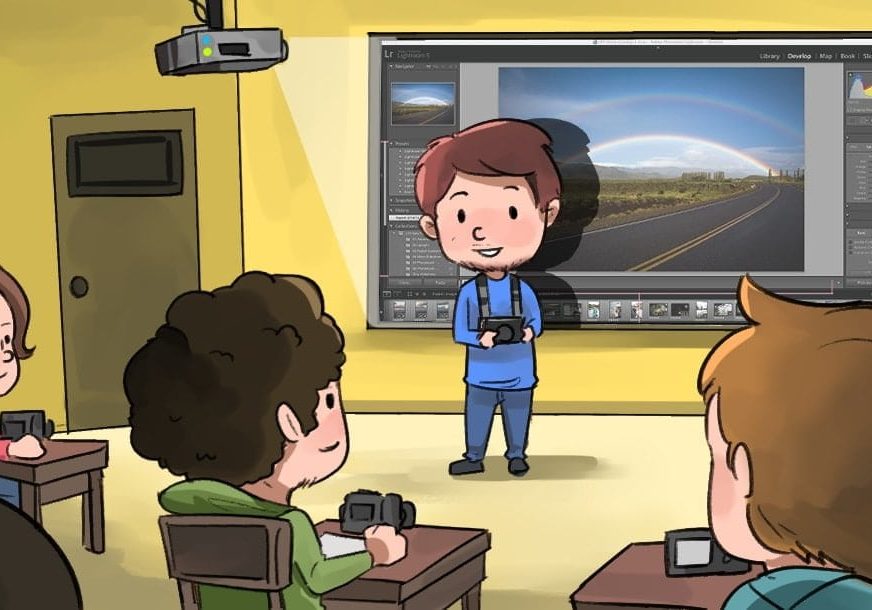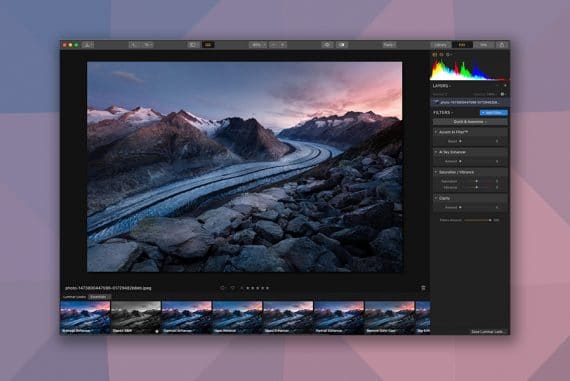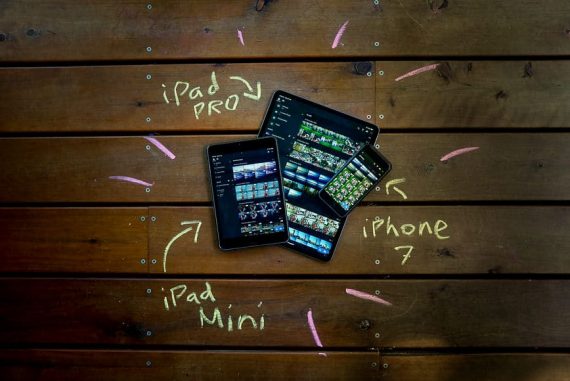If there’s one big benefit of a photographer trying to learn image editing techniques and workflow in 2023, it’s the sheer number of free Adobe Lightroom tutorials available!
As the industry-standard digital image organization and editing application, it’s probably no wonder that there’s no shortage of resources on the topic… but to have so many of them available at no cost is amazing.
In this guide, we’ve put together the ultimate Lightroom tutorial collection for beginners and intermediate Adobe Lightroom users.
They’re all easy to understand, easy to implement, and above all, they all include really useful tips for helping you to become more efficient with this amazing software.
Popular course reveals the simple tricks to getting incredible results with Lightroom in record time. Give Your Photos The Look They Deserve!
![]()
Table of Contents
Most Useful Lightroom Tutorials in 2023
Learn the Basics of Lightroom Classic
Level: Beginner
We cover everything a new user needs to know to get up and running with Lightroom so they can edit their photos with confidence. We’ll assume you have zero experience in Lightroom and we’ll show you what you need to know in order to start editing the way you want.
Learning Lightroom Classic from scratch can be a daunting topic for newcomers to photography. This helpful Lightroom tutorial video helps to explain the basics of the software in less than 30 minutes.
Even at just 30 minutes, there’s a ton of useful content in here, so use the timestamps below to skip ahead to the section you need help with. Definitely one of the more in-depth Lightroom tutorials out there.
- 00:41: Getting Started with Adobe Lightroom
- 03:06: Library Module
- 04:58: Develop Module
- 06:27: Histogram
- 07:03: Tools
- 10:58: Basic Adjustments
- 14:02: Tone Curve
- 15:41: HSL
- 17:06: Split Toning in Adobe Lightroom
- 18:04: Detail
- 19:35: Lens Corrections
- 21:42: Transform (more details on this tool here)
- 22:19: Effects
- 22:46: Calibration
- 23:43: Lightroom Editing Styles
- 25:27: Exporting
Discover the Best Sliders in Lightroom Classic
Level: Beginner
Learn to make your photos pop in Lightroom Classic. Discover which order to make adjustments as well as the difference between the sliders and exactly which ones to use.
This Lightroom photo editing video is only 17:15 minutes long, but it goes through all the basics concerning the sliders that a beginner should know to edit a photo. It also explains in a very approachable way how you can maximise your workspace and make it more convenient for you.
In this tutorial you’ll hear useful explanations on how to use the exposure, shadows, highlights, whites & blacks sliders with your photography post-production – understanding how those work is the first step on the way of making your photos look great.
At 7:31 the lecturer sheds some light on the difference between the colour profiles and the presets which is an area where lots of people tend to get lost a bit at the beginning.
Show off your Photos with an Amazing Lightroom Slideshow
Level: Beginner/Intermediate
Discover how to show off your photos, creating beautiful slideshows and using awesome music, all in Lightroom!
Slideshows are becoming more and more popular these days. A well done slideshow is widely applicable in many scenarios – you can add it to your website, you can post it to Instagram, Facebook, or other social medias.
It’s also a way of showing off your work in a more captivating way and attracting attention to your work. In this video you’ll learn to pair your photos with powerful music samples to make the whole experience even more memorable, using our friend Adobe Lightroom!
How to Retouch a Portrait Photo using ONLY Adobe Lightroom
Level: Intermediate/Advanced
Learn how to retouch a portrait photograph using only Lightroom or camera raw. Whiten teeth and lighten eyes. Soften and smoothen skin and haired more, all without leaving Lightroom or Camera RAW.
Sometimes the constant switching between Lightroom and Photoshop can get a bit of nerve-wracking. In these Lightroom tutorials you’ll learn how to keep activities such as retouching (usually thought to be a Photoshop task), only in Lightroom and skip using the two programs at once.
It’s also useful to hear the lecturer’s perspective on the ethical question of what is ok and what is not really ok to be retouched.
A lot of people tend to get lost along these lines in pursue of the typical fancy magazine look which can be a bit too much, so Lightroom tutorials like this will help a lot when you edit photos.
10 LIGHTROOM tips you SHOULD KNOW!
Level: Beginner/ Intermediate
In this free Lightroom tutorial you can find a wide variety of great Lightroom tips – some of them are real hidden gems when it comes to editing, as well as general tips on photography and using Lightroom online.
There are handy Lightroom tips for everyone. For the beginners there are valuable tips on Auto Tone and Resetting, but for people that are at an intermediate level there’s useful information about the Grid Overlays, or efficient ways to organize your photos.
Here you can find a table of contents:
- Auto Tone – 1:55
- Resetting – 2:48
- Grid Ovelays – 3:46
- Lights Out – 5:35
- Level Out – 6:33
- B&A – 7:30
- Clipping – 8:50
- Radial Brush Adjustment – 10:10
- Size Up your Photography – 12:15
- Organize your photos! – 13:00
3 Lightroom Hack Tutorials for Food Photography
Level: Beginner
Here you’ll learn about three favourite Adobe Lightroom Hacks for Food Photography that are super helpful.
This free tutorial will enlighten you about three simple techniques that you can use take your food photos to the next level. The areas they’re focusing on are HSL sliders, Radial filer and Sharpening mask to give your photography a big boost.
These three simple hacks are actually applicable to pretty much every food image (not to mention photos of other genres), that you take and can turn out to be great guiding lines for you to begin if you don’t know exactly from where you should start Lightroom editing.
How to Speed up Lightroom
Level: All
Every Adobe Lightroom user from beginner through to professional should implement these 13 tips to make their post-processing experience more fast, efficient and enjoyable.
This helpful tutorial by Mark from Shotkit shows you how to make Lightroom faster via the implementation of several simple but effective tricks.
A couple of the tutorials you may already know, but I guarantee that whatever your experience with this software, you’ll learn at least one new thing – the Lightroom Smart Previews tip is killer, and something you can use on all your photos right away!
When properly set up and optimized, Lightroom is actually incredibly snappy – if your version is starting to feel a bit sluggish, this short video is a must-watch.
Be sure to subscribe to the free Shotkit newsletter to be notified of more photography and Lightroom editing tutorials.
How to Create STUNNING Sunset Photos
Level: Beginner/ Intermediate
This video shares all of the secrets and techniques to use when editing a sunset photo. Instead of going for the classical orange look, it focuses on getting a great variety of colors and a dynamic picture.
This tutorial is very useful for people who are really into landscape photography. It gives you an idea which tools and sliders you should use to improve your image without making it look too unnatural and overdone.
We all know how easy it is to get carried away with editing when it comes to this particular genre!
Some of the helpful topics the lecturer covers are Graduated & Radial filers, HSL sliders, Tone curve and Split toning.
(For those wanting to take it one step further, there’s also the option to create a Lightroom HDR, by navigating to ‘Photo’ > ‘Photo Merge’ > ‘HDR’ in the upper menu.)
Auto Mask Lightroom Tutorial – How To Mask Anything Fast!
Level: Beginner/ Intermediate
This Lightroom trick literally changed the way I edit forever – I had no idea how easy it was to create masks in Lightroom, and no idea how masking in Lightroom works as a photoshop replacement for MANY applications.
This tutorial focuses on a feature that has been kind of reserved area for Photoshop – masking. The auto mask feature is one of the biggest secrets hidden in Lightroom which can change your way of editing.
Here you’ll learn the easy way to auto mask in Lightroom – using Lightroom masking brushes to affect masks for color, mask overlays, and doing things like recovering blown out backgrounds or getting detail back in the sky.
- Read more: How do I use the new mask tool in Lightroom?
How to use the tone curve in Lightroom
Level: Beginner/Intermediate
Don’t let the tone curve intimidate you! Learn how to use the Tone Curve In Lightroom and unlock a ton of powerful editing features in this comprehensive Lightroom Tutorial.
This tutorial offers a very in-depth overview of a Lightroom feature that is super popular. It also brings you back in high school for a brief moment explaining about the primary colors.
A very useful trick that you’ll be able to learn here is how to give your images a bit of a cinematic look by adding a pinch of color in the shadows.
The tutorial gives a good number of reasons why you’d prefer using the Tone curve instead of other features.
A few of them are: it allows for selective contrast, it gives you the opportunity to set custom black & white points. Also, the red, green and blue portions of the tone curve allow you to do all of this with specific color channels.
How to Add Metadata to Photos in Lightroom
Level: Beginner
Metadata is information that is stored inside of an image file. It’s not visible when looking at a photo, but it includes information about when and how that photo was taken. You can ADD metadata to images to protect them with copyright information. If anyone downloads your image from online, your name will be forever stuck inside of that image. HA!
Something absolutely crucial for your online presence, which a lot of us overlook sometimes is our metadata.
In this Lightroom tutorial, Aaron Nace explains everything form what is metadata actually to how to check your metadata online.
As a bonus, you also learn how to keyword your images in the catalogue and also add those keywords to the metadata preset, if you so desire.
10 Hidden Lighroom Features
Level: Beginner/ Intermediate
10 tips for secret and lesser-known features that help your editing and speed up your workflow in Adobe Lightroom.
Lightroom has a lot of features that you might not be able to find straight away, at least, not without tutorials like this one.
A lot of features might be hidden behind a shortcut or a small menu which you might not see for months if you don’t know it’s there.
This free Lightroom tutorial rounds up a sum of small, but useful tricks, and a variety of really useful and important hacks to help you speed your workflow, batch edit images and create better images overall.
How to Dodge and Burn in Lightroom
Level: Intermediate
Learn how to really sculpt the face and make the portrait pop, with dodging and burning in such a way that allows you to take care of intensity, softness and even deal with color shifts. Utilize adjustment brushes with the right settings and Lightroom shortcuts.
Dodge and burn is a popular Photoshop technique to help your image pop by creating, and essentially painting, the contrast yourself.
It is considered an advanced technique for post-production, however in this tutorial you can learn how to do it in Lightroom, instead.
It is a good way to practice your brush work and take your edits on the next level at the same time. Something really useful that you’ll learn is how to create your custom brushes which you can use the next time you’re looking for the same effect.
Be sure to subscribe to their YouTube channel for more useful photography and photo edit advice tutorials.
How to refine and cull images in Lightroom
Level: Beginner/ Intermediate
Think of Culling as a Series of Steps. Culling a set of photos is done in a couple of different steps. In each step, the selected images are refined to include only the best photos.
What better way to keep your images organized, than to make sure you only keep the images you REALLY need.
This useful Lightroom tutorial explores the workflow of Aaron Nace and the way he culls his images.
Not only this can beneficial for your image organization and search, but it will also help you make sure you keep only the right images for the job, thus saving you hard drive space.
You’ll also learn useful comparison modes and shortcuts in the process.
Phlearn also has plenty of useful photography tutorials, as well as general tutorials to help you get the most out of every photo edit, so be sure to check them all out.













